
Harald Reinl was an Austrian film director. He is known for the films he made based on Edgar Wallace and Karl May books and also made mountain films, Heimatfilms, German war films and entries in such popular German film series as Dr. Mabuse, Jerry Cotton and Kommissar X. His directing output includes more than 60 titles. With his Edgar Wallace and Karl May adaptations, Reinl advanced to become one of the most successful directors in German cinema in the 1960s: with the four Karl May films he made between 1962 and 1965 alone, Reinl reached 32 million viewers.
Edgar Wallace (1875–1932) was a British novelist and playwright and screenwriter whose works have been adapted for the screen on many occasions.
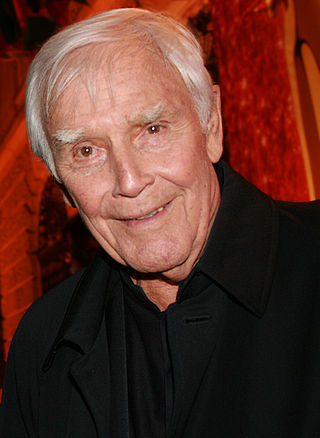
Joachim "Blacky" Fuchsberger was a German actor and television host, best known to a wide German-speaking audience as one of the recurring actors in various Edgar Wallace movies. In the English-speaking world, he was sometimes credited as Akim Berg or Berger.

Siegfried Lowitz was a German actor.
Rialto Film is a German motion-picture production company headquartered in Berlin. It is named after the Rialto in Venice, and used as its production logo an image of a gondola in front of the Rialto Bridge.
Mark of the Frog is a 1928 American drama 10-chapter film serial directed by Arch Heath and written by Edgar Wallace. The film is now considered to be lost.

The Dead Eyes of London is a 1961 West German black and white crime film directed by Alfred Vohrer and starring Joachim Fuchsberger, Karin Baal and Dieter Borsche.
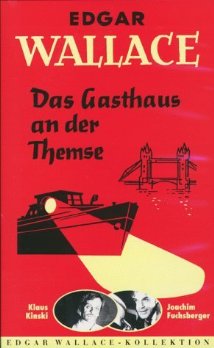
The Inn on the River is a 1962 West German crime film directed by Alfred Vohrer and starring Joachim Fuchsberger, Eddi Arent and Klaus Kinski. It is part of a cycle of films based on the novels of Edgar Wallace, produced in West Germany in the 1950s and 1960s.
Egon Eis, born Egon Eisler was an Austrian screenwriter. He wrote for nearly 50 films between 1930 and 1983. Eis was forced into exile during the Nazi era, but returned to work in the German film industry after the Second World War where he worked on the popular series of Edgar Wallace films as well as other projects. He was born in Vienna, Austria and died in Munich, Germany. His brother Otto Eis was also a screenwriter.
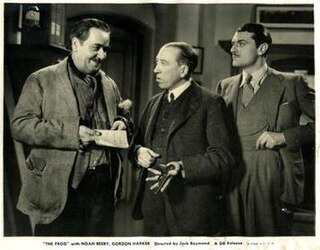
The Frog is a 1937 British crime film directed by Jack Raymond and starring Gordon Harker, Noah Beery, Jack Hawkins and Carol Goodner. The film is about the police chasing a criminal mastermind who goes by the name of The Frog, and the 1936 play version by Ian Hay. It was based on the 1925 novel The Fellowship of the Frog by Edgar Wallace. It was followed by a loose sequel The Return of the Frog, the following year.
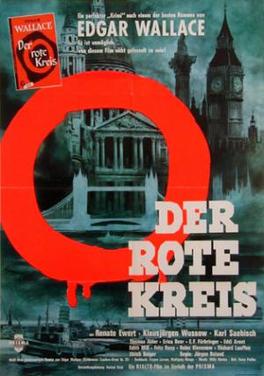
The Crimson Circle is a 1960 West German/Danish black and white crime film directed by Jürgen Roland and starring Renate Ewert, Klausjürgen Wussow and Karl-Georg Saebisch. It was an adaptation of the 1922 novel The Crimson Circle by the British writer Edgar Wallace.
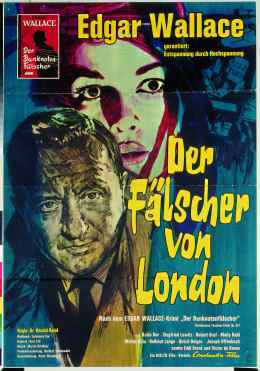
The Forger of London is a 1961 West German crime film directed by Harald Reinl and starring Karin Dor, Hellmut Lange and Siegfried Lowitz. It is an adaptation of Edgar Wallace's 1927 novel The Forger, and part of a long-running series of German Wallace films made during the decade.

The Terrible People is a 1960 West German crime film directed by Harald Reinl and starring Joachim Fuchsberger, Karin Dor and Fritz Rasp. It is based on Edgar Wallace's 1926 novel of the same name.
Der Hexer is a 1964 West German black and white mystery film directed by Alfred Vohrer and starring Joachim Fuchsberger. It was part of a very successful series of German films based on the writings of Edgar Wallace and adapted from the 1925 novel titled The Ringer. In 1965, a sequel Neues vom Hexer was released.
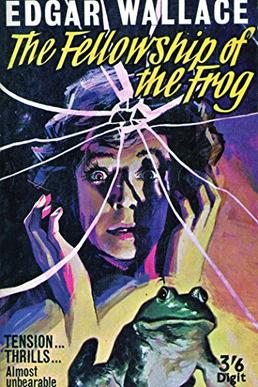
The Fellowship of the Frog is a 1925 crime novel by the British writer Edgar Wallace. It was part of a series of books featuring the character Inspector Elk of Scotland Yard. In 1936 it was adapted into a West End play The Frog by Ian Hay, which inspired the subsequent films.

The India-Rubber Men is a 1929 crime novel by the British writer Edgar Wallace. It was part of a series of books featuring the character Inspector Elk of Scotland Yard.

Room 13 is a 1924 crime novel by the British writer Edgar Wallace. It was the first in a series of books featuring the character of J. G. Reeder, a mild-mannered civil servant who is a brilliant detective.

Room 13 is a 1964 thriller film directed by Harald Reinl and starring Joachim Fuchsberger, Karin Dor and Richard Häussler. It was made as a co-production between West Germany, France and Denmark, based on the 1924 novel Room 13 by Edgar Wallace. It was part of a long-running German series of Wallace adaptations made by Rialto Film.

The White Spider is a 1963 West German crime thriller film directed by Harald Reinl and starring Joachim Fuchsberger, Karin Dor and Horst Frank. It is based on a novel of the same name by the Czech writer Louis Weinert-Wilton.

The Twins from Zillertal is a 1957 West German comedy film directed by Harald Reinl and starring the twins Isa Günther and Jutta Günther, Joachim Fuchsberger and Karin Dor. It takes its title from the Zillertal Valley in Tyrol. It was shot in Eastmancolor at the Bavaria Studios in Munich with location shooting in Austria at the Schloss Matzen, Krimml Waterfalls, Zell am Ziller and Innsbruck. The film's sets were designed by the art director Arne Flekstad. It was part of the post-Second World War boom in Heimatfilm.















